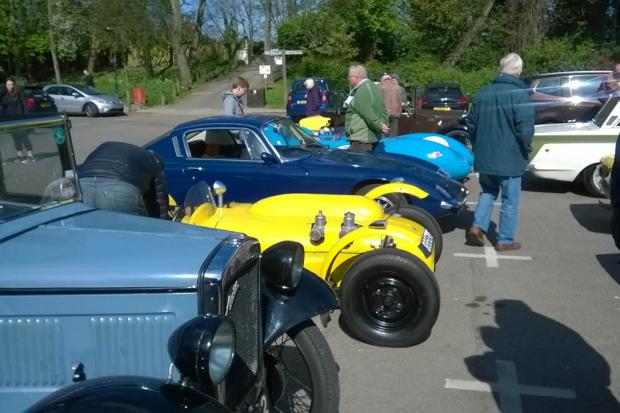
The early history of Lotus is tied to London, where the company was founded in 1952. Several relics from that era still exist, and a handful of dedicated fans recently toured the capital to discover that heritage in their classics. Tony Scales reports.
On a beautiful April Sunday the Herts. Centre held its North London Tour to celebrate the links between the 750 Motor Club and the north London enthusiasts and craftsmen who created Lotus and Britain’s first “motor racing valley” in North London. We met at Alexandra Palace with a Lotus 6, an Eleven, Ron Welsh’s Lotus Cortina, Neil Tywman’s Seven and six Elans plus three Austin 7s forming our convoy to the first stop, the original Lotus factory at Tottenham Lane Hornsey.
What was once Stan Chapman’s Railway Hotel is now “Funky Brownz” nightclub – time moves on. We were able to view the factory through the Jewson’s gate. Thanks to Jack Field, the long-serving Lotus and Cosworth storekeeper, we had a detailed sketch of the original factory layout. Two of our cars, Dave Morgan’s Lotus Eleven and Terry Tumbler’s Lotus 6, were built at the Hornsey site, so we lined them up at the factory entrance for a photoshoot.

From Hornsey our convoy travelled through Tottenham and around the North Circular to the Montague Road Industrial Estate, which in the 1950s and 1960s was “motor racing valley”. Our first stop was the former Cosworth factory in Kenninghall Road. Here, Keith Duckworth and Mike Costin developed and built hundreds of FJ and F3 engines, plus the SCA prototypes after it was vacated by Lotus’ prototype Elite build team. Appropriately, it is now run by George, a Bulgarian Subaru tuner. He very kindly opened on Sunday so we could look around inside. More kind help came from Mike Costin himself, who sent us a detailed drawing of the original 1700sq ft layout. As well as stores and welding, four engine builders built one FJ/F3 engine each per day with three dynos squeezed in on one side for testing and development. So tight was space that Mike and Keith Duckworth lived in the roof space accessed only by a vertical ladder!

Just four hundred metres from Cosworth in Stacey Avenue was the factory of Williams and Pritchard, builders of the beautiful alloy bodies for many 1950s Lotus cars, as well as the prototype bodies for the Marcos GT and the Gordon Keeble. Their aircraft technology-based products were far more advanced than the better known Italian bodies, as well l as being truly aerodynamic thanks to input from Frank Costin. Our guide for Edmonton was Ron Welsh, whose family ran Edmonton Tool and Engineering around the corner in Second Avenue. They were major machining and parts suppliers to Lotus from the early years right through to the Lotus 72 cars and beyond. Ron is a goldmine of information on the racing history of the area.


